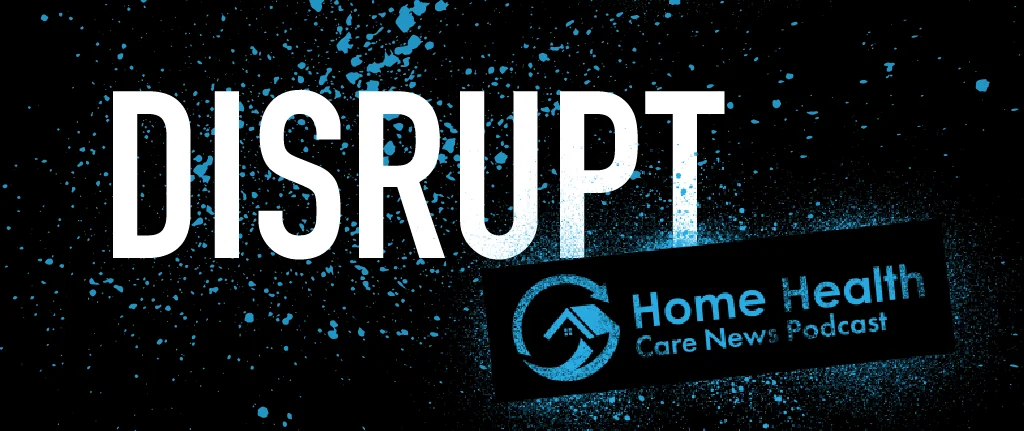Under the leadership of CMO and co-founder Dr. Clive Fields, VillageMD has grown from a primary care practice of 13 physicians in 2013 to a network of more than 2,600 physicians across nine markets.
The Chicago-based VillageMD has taken an innovative, home-based approach to primary care ever since it was founded. Now, that innovative approach — which pulls in home health and home care providers — has netted the company a massive partnership with Walgreens Boots Alliance (Nasdaq: WBA).
On July 8, Walgreens announced it will invest $1 billion in equity and convertible debt into VillageMD over the next three years. That includes a $250 million equity investment already completed in July.
To learn more about VillageMD’s plans with Walgreens and how it sees the future of health care, Home Health Care News sat down with Fields for a recent episode of Disrupt.
Highlights from HHCN’s conversation with Dr. Fields are below, edited for length and clarity. Subscribe to Disrupt via Apple Podcasts, Google Play Music, SoundCloud or your favorite podcast app.
HHCN: You have Village Medical at Home as a segment of VillageMD. But do you work at all with home health care providers or non-medical home care agencies?
Fields: Absolutely. We don’t replace home health care providers. They have a unique skill set, and we try to identify those providers in each of our markets that deliver the highest quality of care.
Home visits used to just be part of what you did. It really wasn’t distinguished in any way from traditional office-space care. What happened when I went into practice in the early 90s is that my dad had a number of these patients that he was still managing at home. On the drive home, he would stop and take care of somebody — sometimes for clinical reasons, sometimes it might be more for social support. Sometimes it might be to drop off a prescription because the patient wasn’t able to go out and pick up a prescription, because of isolation or lack of access to transportation.
What I learned is that there are a number of patients — especially elderly and more complex patients — that when taken care of in the home through a comprehensive primary care model, you can achieve better patient satisfaction, better quality, lower costs and, in all honesty, and an improvement or increase in provider satisfaction.
Walgreens will eventually be a 30% owner of VillageMD with its recent investment. How did this relationship start in the first place?
If you think about the most common contact that a patient has with a health care system, it’s with a primary care provider. And if you think of the most common intervention that a patient has to manage chronic disease, it’s through a pharmaceutical intervention.
So it’s a little bit like hot dogs and mustard — that primary care and pharmacy services should be aligned and integrated in a way that’s different from what it currently is.
As we started to build out Village Medical in Houston, one of the first things we did is we actually added a full-service pharmacy to the office that I work in. We saw significant improvement in patient satisfaction, and that’s because through a collaborative care agreement, our pharmacists had access to our electronic medical records. Instead of just filling a prescription, they actually have the ability to look at a continuous and comprehensive medical record. As a result of that, they were able to help us optimize medication.
Our first experience with pharmacy was overwhelmingly positive, so we added another pharmacy in Houston and one in our Kentucky office. And around that time, we were approached by Walgreens. We shared our model, and I think that they were really intrigued — not just with the additional capacity or ability of our providers to manage chronic disease through the continuum — but also the fact that we were already embedded in communities.
How does the investment accelerate what you’re doing at VillageMD?
We decided that if we partnered and worked with somebody like Walgreens, there were a couple different things they would bring to the table. They would bring physical locations that many times are the most convenient in every neighborhood that they operate in. And that includes visibility, parking, access and things like that.
At the same time, it would give us access to its pharmacy network and its pharmacists and the ability to work together in a clinical location. It was something that came about through mutual cultural and clinical considerations.
One of the things we’re most proud of is — as we are identifying sites for these co-located clinics — over 50% of these sites are going to be opened in what are historically underserved communities.
How does home-based care play a part in the mission between VillageMD and Walgreens?
Comprehensive, home-based primary care is an integral part of our clinical model. We know there are those elderly and complex patients that — for a variety of reasons — cannot come to traditional health care environments.
But we know that those patients are typically older, they are more complex, and they do require, a lot of the time, complex medication regimens. The ability to coordinate pharmacy services with our Village at Home services, which is something that we offer in every market that we’re in, was really a partnership that made a lot of sense. It’s very similar to the way that we would partner with a home health care agency or for home health care services that also aligned both culturally and clinically with our goals.
Have your future home-based care plans been altered due to COVID-19?
When we look back on COVID-19, we’re going to see that it was the initiator of some of the most rapid technology advancements in health care that we’ve seen.
Many doctors have pivoted to telehealth. Telehealth used to be a platform that most of us thought of as an urgent care tool. But now we see it as a platform that has been accepted by providers and by patients. A number of new use cases have developed.
We think about wound care in the home and the ability of one of our wound care specialists to do telehealth at the bedside, virtually, with either a nurse practitioner who may be doing a debridement or a home health care agency that’s been engaged to take care of a wound. Those are things that we talked about for a long time in medicine, but most of us were somewhat resistant to.
What’s a bold prediction that you have about health care over the next five years?
I think we’re going to recognize as a country that we have under-invested in primary care. At the current spend, which is about 6% to 6.5% [of the overall spending], that investment likely needs to be doubled. And if we do that, we’ll actually see a decline in the total cost of care.
At the same time, we’re going to see improved quality, improved lifespan, and, most importantly, we’re going to meet patients’ needs, whatever those patients’ needs may be. So I’m excited about the future of primary care. I’m excited about growing care teams that include pharmacists, and I’m especially excited about taking the clinical platform, which has traditionally been in an office, and extending that into the home — both physically and through technology.




